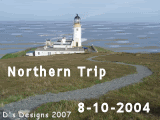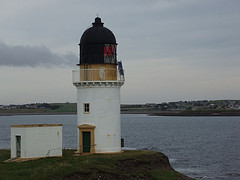There are 7 species of marine turtle left in the world. The leatherback turtle is the larges; the biggest ever found measured 2.9 m (nearly 10 ft) in length and weighed 915 kg. They eat jellyfish, which is why they occur in British waters. Eggs are laid on tropical beaches. The temperature during the incubation period dictates the gender. Anything above 29C creates females, under 29C and it's male. The hatchlings head for the light horizon, where moon and stars reflect off the water. The land behind the beach is usually dark. Threats include egg poaching, development of beaches (hotels) and light pollution. Turtles die of starvation at sea after ingesting plastic bags, which they mistake for jellyfish. They can drown after becoming entangled in static fishing gear, like ropes for lobster cages.
All sightings of marine turtles should be reported on http://www.euroturtle.org/turtlecode
Turtles that are fitted with a satellite transmitter can be tracked via http://www.seaturtles.org/tracking
Organisation that are concerned with sea turtles are SNH (in Scotland), and the MCS (Marine Conservation Society).












No comments:
Post a Comment